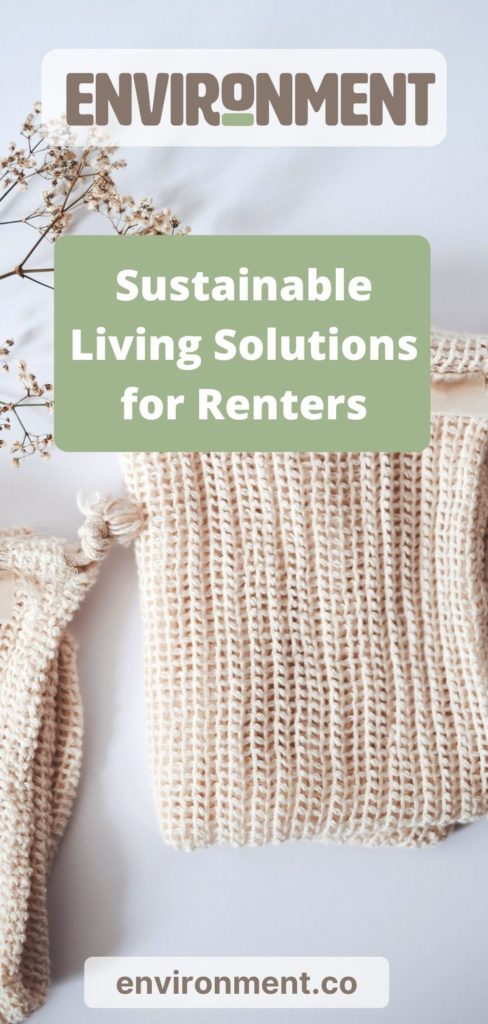
Sustainable Living Solutions for Renters
We are reader-supported. When you buy through links on our site, we may earn affiliate commission.
Now more than ever, Americans and people all over the world are looking to live sustainably. In fact, in one study, 87% of respondents said they made a conscious effort to be eco-friendly and make sustainable choices. If you’re one of the many committed to doing the same, one of the best things you can do for yourself and the environment is finding a sustainable living solution. That means thoroughly vetting potential apartments and looking for ways to green your space after you move. Here are a few ways you can do just that.
Reuse and Recycle
It goes without saying, but reusing and recycling are still some of the best ways to live sustainably, even if you’re renting. It just might be a bit more challenging to do than if you were living in a full-size home. While reusing packaging, jars and other items may be relatively easy, finding a place to keep your cans, bottles, plastics and cardboard until you have a chance to recycle them can be tricky. Get a smaller bin and empty it frequently or keep a large one in a utility closet so that you have easy access, and it’s out of the way. Only toss actual garbage — or non-recyclables — in the trash.
Reduce Waste
You might also reduce the amount of trash you’re tossing by brining fewer tossable items into your home. One of the simplest ways to accomplish this involves purchasing fewer packaged foods or items with unnecessary wrapping and labeling. Doing most of your grocery shopping in the fresh fruits and vegetable section can make a huge difference. Be sure to avoid those thin plastic veggie bags, too, by bringing your own reusable ones. Additionally, you might consider keeping a small composting in your apartment. Toss food scraps and other perishables in the bin and empty it at your local community garden — as long as they permit it. Doing so allows your food to come full circle, fertilizing the growing plants and vegetables that you or someone else will eat.
Plant an Indoor Garden
You can still have a garden even if you don’t have a yard. Consider planting herbs like basil and cilantro or vegetables like tomatoes and chives in a container garden inside. Keep the planter box on a windowsill or a patio to give your leafy greens some sunshine. Growing your own food in such a way can both reduce your grocery bill and your food miles, therein minimizing your carbon footprint. Plus, stretching your green thumb now is good practice for when you get a home and can have a full-size garden.
Find an Eco-Friendly Complex
While you’re searching for an apartment, look for a complex that is eco-friendly and prioritizes sustainability. Often, these complexes are Leadership in Energy and Environmental Design certified. This third-party certification program awards operations with LEED certifications based on air quality, waste management practices, eco-friendly construction, water conservation, energy efficiency and access to public transit. If you find a complex that’s LEED-certified, it’s a good sign they’re consciously working to reduce their carbon footprint and create a healthy environment for residents. They may also be more willing to work with you if you express interest in starting a recycling initiative, outdoor garden or compost bin.
Cut Energy Usage
Regardless of whether or not the unit you’ll be renting is eco-friendly, it’s still good practice to use as little energy as you can. Switch off lights when you leave a room and unplug devices when you aren’t using them. While these extra steps might feel like overkill, they’ll save you money on your electric bill and help the environment. It turns out that, even if your TV and toaster are off, they’ll continue drawing power. The same is true of chargers you leave plugged into outlets. Even if you aren’t charging your phone, the charger will still use electricity. In the U.S., the cost of these plugged in but unused devices is $19 billion and about 50 large power plants’ worth of electricity per year.
Consider Location
Narrowing down your apartment search based on its location is also a good way to find a sustainable living solution. Think about a potential complex’s proximity to places you’ll frequent — like the office or gym. Could you bike or walk there from your new place? If the local grocery store or gym isn’t within walking distance, how close is the nearest public transit station or bus pick up? Taking the bus or train within urban areas is less expensive and more eco-friendly than driving a car. Thus, if you live closer to a station, living sustainably will be much more accessible.
Talk to Your Landlord
Of course, finding an apartment that checks all the boxes, is within your price range and is sustainable isn’t always easy. In some way or another, you’ll have to make a few compromises — at least in the beginning. As you settle into your new place, consider speaking with your landlord about any concerns you might have about the eco-friendliness of the unit. For instance, maybe your landlord could switch out the incandescent lights in your apartment for LEDs or perhaps even install solar panels. Explain how these options can save them money and improve the property in the long-term. They might just take your word for it.

Share on
Like what you read? Join other Environment.co readers!
Get the latest updates on our planet by subscribing to the Environment.co newsletter!
About the author
Jane Marsh
Starting from an early age, Jane Marsh loved all animals and became a budding environmentalist. Now, Jane works as the Editor-in-Chief of Environment.co where she covers topics related to climate policy, renewable energy, the food industry, and more.





